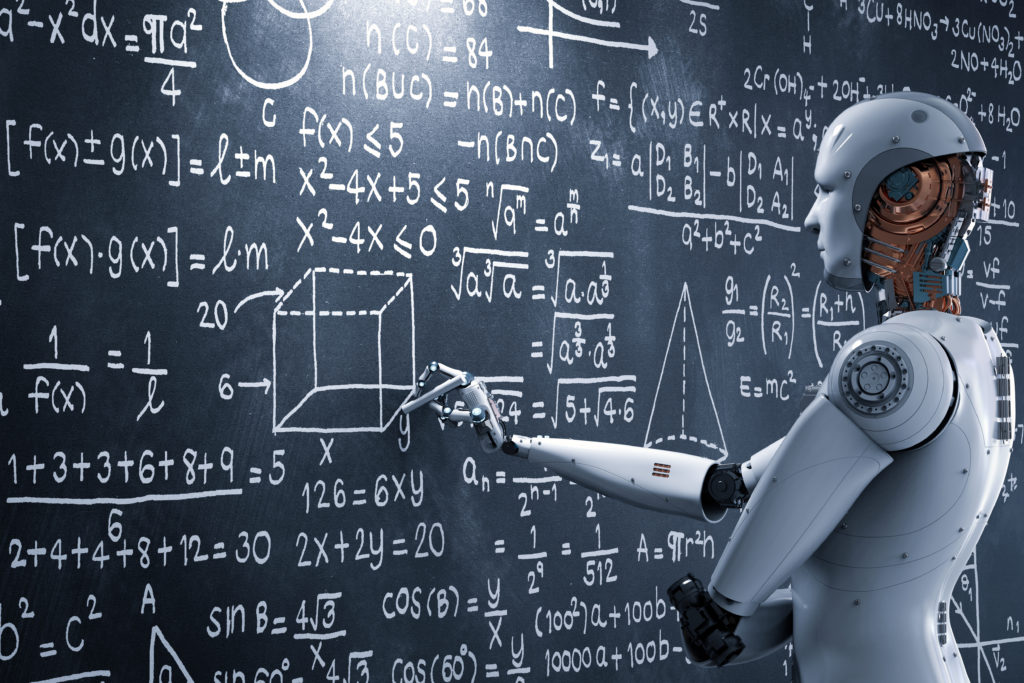Alan Turing wondered: can machines think? What makes “something” be considered intelligent? See below how artificial intelligence works, the science that aims to solve these questions with practical experiments that are helping humanity take its next steps.
What is artificial intelligence?
The main limitation of defining artificial intelligence or AI simply as “building machines that are intelligent” is that it doesn’t really explain what artificial intelligence is. What makes a machine intelligent?
AI is an interdisciplinary science with multiple approaches but advances in machine learning and deep learning are creating a paradigm shift in virtually every sector of the technology industry.
How does artificial intelligence work?
Contemporary AI authors Stuart Russell and Peter Norvig define the concept as “the study of agents that receive information and perceptions from the environment and perform actions.”
Currently, there are several techniques that are used to work with artificial intelligence. Depending on the application and objective, some are more explored, but all can act in a complementary way.
Machine learning (learning from experience)
It is an application of AI that provides computer systems with the ability to automatically learn and improve from experience, without being explicitly programmed. Machine learning focuses on developing algorithms that can analyze data and make predictions.
In addition to being used to predict which Netflix movies a user might like or the best route for an Uber, machine learning is being applied to the healthcare, pharmaceutical and life sciences sectors to aid in the diagnosis of diseases, interpretation of medical images and accelerate drug development.
Deep learning (self-learning machines)
Deep learning is a specific subset of machine learning. Its main difference is that it employs artificial neural networks that learn by processing data. Artificial neural networks mimic the biological neural networks of the human brain.
Multiple layers of artificial neural networks work together to determine a single output from many inputs, for example, identifying an image of a face in a mosaic of tiles.
Machines learn through positive and negative reinforcement of the tasks they perform, which requires constant processing to progress. This is the technique that leads to speech recognition.
Neural networks (making associations)
Neural networks enable deep learning. They are computer systems modelled after neural connections in the human brain. The artificial equivalent of a human neuron is a perceptron. Just as bundles of neurons create neural networks in the brain, stacks of perceptrons create artificial neural networks in computer systems.
This process analyzes data multiple times to find associations and give meaning to the undefined. Through different learning models, such as positive reinforcement, the machine learns that it has successfully identified the object.

Cognitive computing (context analysis)
Cognitive computing is another essential component of AI. Its goal is to mimic and improve the interaction between humans and machines. Cognitive computing seeks to recreate the human thought process in a computer model, specifically by understanding language and the meaning of images.
Together, cognitive computing and artificial intelligence work to give machines human-like behaviours and information-processing abilities.
NLP (Natural Language Processing – understanding language)
Natural Language Processing or NLP allows computers to interpret, recognize and produce human language and speech.
The goal of technology is to enable seamless interaction with the machines we use every day, teaching systems to understand human language in context and produce logical responses. A good example is real-time language translators, such as Skype.
Computer vision (active “machine eyes”)
Computer vision is a technique that implements deep learning and pattern recognition to interpret the content of an image. The action is performed on a variety of types, including graphs, tables, and images in PDF documents, as well as other texts and videos.
Computer vision is an integral field of artificial intelligence, allowing computers to identify, process and interpret visual data. They become more active in defining which data will be used for greater accuracy in the response. Medical sciences are the area where this technique is most effective — “clinical eyes”, we might say.
Artificial intelligence has so far covered all these sets of specific techniques that may or may not combine forces to expand its functionality. Each aspect is so rich that it would be possible to write individual posts.
With information: Builtin, Innoplexus.

